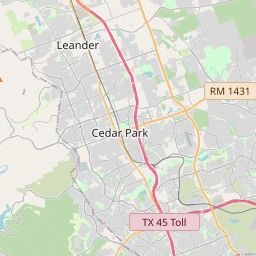Champion Cemetery
Historical marker location:






John (Jack) Champion (1817-1908) was a native of York County, South Carolina. He moved to Texas by 1850, the year he and Naomi Jane Standefer (1834-1862) were issued a marriage license in Williamson County. In 1854, Champion bought more than 200 acres at the headwaters of Brushy Creek. He later served in the Civil War and, briefly, as County Sheriff. The grave of Naomi, the mother of seven of Champion's nineteen children, is the oldest of the four marked graves in the pioneer family's cemetery. Surveys indicate the presence of at least five unmarked graves.
Historic Texas Cemetery - 2002
As one of the most visible programs of the Texas Historical Commission (THC), historical markers commemorate diverse topics in Texas history, including: the history and architecture of houses, commercial and public buildings, religious congregations, and military sites; events that changed the course of local and state history; and individuals who have made lasting contributions to the state, community organizations, and businesses.
The city of Austin, the state capital, is known as the live music capital of the world. It is home to many music festivals, including South by Southwest (SXSW) and the Austin City Limits Music Festival.
The region was first settled by European pioneers in the mid-19th century. The establishment of Fort Tumlinson in 1839 provided protection to settlers, and the population grew steadily with the arrival of more immigrants in search of new opportunities. In 1848, the county was officially organized and named after Robert McAlpin Williamson, a judge and soldier in the Republic of Texas.
During the Civil War, Williamson County faced significant challenges. Many residents joined the Confederate Army, and the county became a hotbed of conflict due to its location on the frontier between Union and Confederate territories. After the war, the area was able to rebuild and experienced a period of economic growth, driven by agriculture, cattle ranching, and the emergence of small towns and rural communities.
In the 20th century, Williamson County continued to develop and adapt to changing times. The discovery of oil in the early 1900s brought economic prosperity to the region, and the county experienced a boom in population and infrastructure. Today, Williamson County is a thriving part of the greater Austin metropolitan area, known for its strong economy, vibrant communities, and commitment to preserving its historical roots.
Williamson County Timeline
This timeline provides a concise overview of the key events in the history of Williamson County, Texas.
- 1804 - The area that is now Williamson County is settled by Native American tribes, including the Tonkawa, Lipan Apache, and Comanche.
- 1836 - Texas gains independence from Mexico.
- 1838 - The Texas legislature establishes Williamson County, named after Robert McAlpin Williamson, a leader in the fight for Texas independence.
- 1848 - The Mexican-American War ends and the Treaty of Guadalupe Hidalgo is signed, officially establishing the Rio Grande as the boundary between Texas and Mexico.
- 1850 - The population of the county reaches 1,027.
- 1876 - The Texas State Capitol building is completed in Austin, which becomes the seat of government for Williamson County.
- 1881 - The International-Great Northern Railroad reaches Georgetown, bringing economic growth and development to the county.
- 1907 - The county courthouse, located in Georgetown, is completed.
- 1930s - The Great Depression hits Williamson County, causing a decline in the local economy.
- 1950s - The county experiences a period of growth and prosperity, with the population increasing significantly.
- 1990s - Development and suburbanization accelerate in Williamson County, with the county becoming one of the fastest-growing areas in the United States.